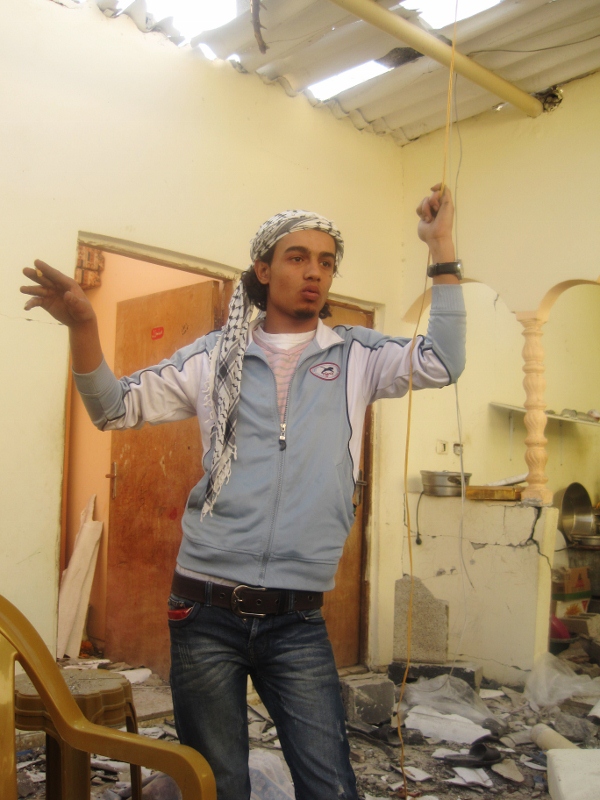Tag: Gaza
-
Gaza attack: “My uncle died in my arms”
by Ruqaya Izzidien 9 December 2011 | Al Akhbar English “My uncle was breathing when I found him under the rubble,” said Migdad Elzalaan. “He told me, ‘Look after our family, look after the children. Look after them,’ and then he died, right in my arms.” At around 2am on Thursday night, Israeli forces bombed…
-
Still casting lead: Israeli air force attack kills 2, injures 12 in single family
by Radhika Sainath 9 December 2011 | Notes from Behind the Blockade Update: Midgdad’s 12-year-old cousin died yesterday. “This is the occupation,” a neighbor mumbled as we stepped into what remained of twenty-year-old Migdad El Zalaan’s cement-block home in the north of Gaza City this afternoon. The Israeli Air Force dropped the first of three bombs…
-
Commemorating the anniversary of the First Intifada in the no go zone
by Nathan Stuckey 6 December 2011 | International Solidarity Movement, Gaza Twenty four years ago, on December 9, 2011 a revolution began. The revolution began in Gaza, it was the First Intifada. After twenty years of Israeli occupation Palestinian resistance exploded in full force. Boycotts, demonstrations, tax refusal, all of these were the strategies of…



